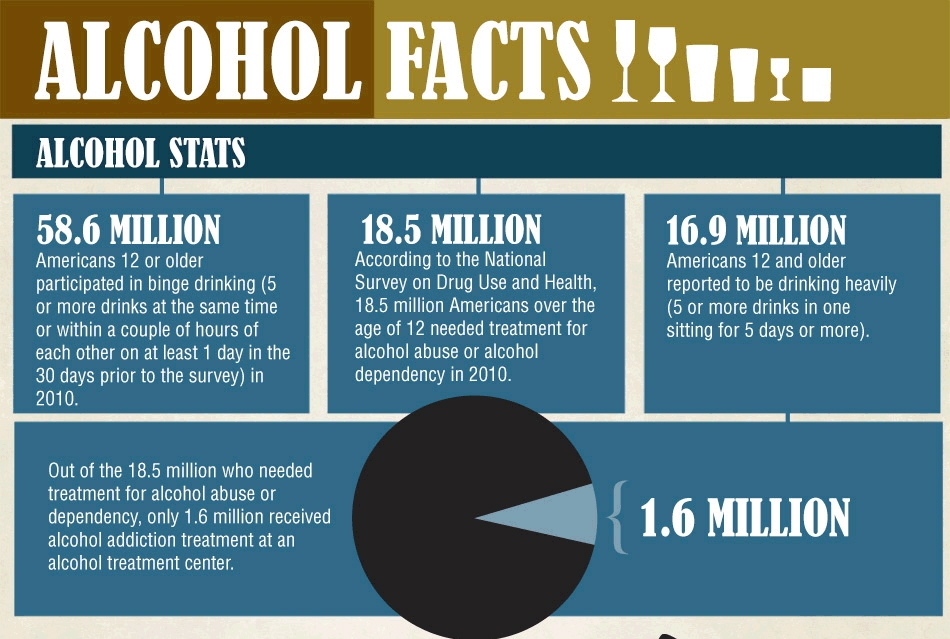Alcohol
What is Alcohol Addiction?
The DSM-V integrates two alcohol related disorders that were previously recognized by the DSM-IV-TR, alcohol abuse and alcohol dependence, into alcohol use disorder (AUD), more commonly referred to as alcoholism. AUD is defined as possessing at least two of the eleven symptoms listed here and can be categorized by sub-classifications depending on the number of symptoms present within an individual (mild (2-3), moderate (4-5), severe (6 or more)).
Prevalence of Drinking in the US
-Nearly 90% of individuals, ages 18 and older, have at some point  consumed alcohol.
consumed alcohol.
-16.6 million of these individuals experience AUD; and, nearly 700,000 additional individuals, ages 12-17, also experience AUD.
-Combined with binge and heavy drinking, alcohol accounts for nearly 90,000 deaths a year, making it the third leading preventable cause of death.
Social and genetic components of alcohol
Twin studies have shown genetic links to alcoholism.
Children born to alcoholic parents are 50% more likely to develop alcoholism.
Multiple genes are thought to be involved.
Alcohol disorders are most prevalent in Eastern Europe, particularly Hungary, Russia, and Belarus.
Historical and societal factors likely play a role in why some countries are larger consumers of alcohol than others.
Eight of the top 10 countries with highest alcohol consumption do not have public policies in place to address the effects of alcohol.
Men are nearly three times as likely to develop alcoholism than women.
*More detailed information about the vulnerabilities to alcohol addiction can be found here.

